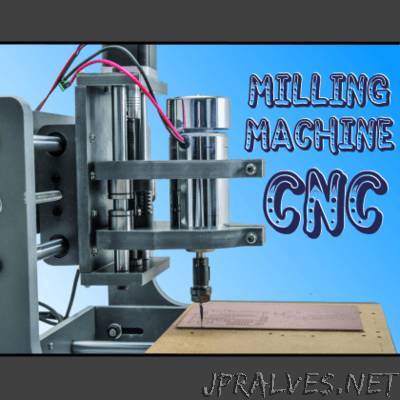
“Supplied with a robust chassis (made of plastics) and with three stepper motors, it is provided with a 9,000 RPM electro-spindle, to which it is possible to apply different kinds of milling parts, for the purpose of working wood, plastics, synthetic resins, and for carrying out small engravings on aluminum. It is not the first time that we deal with numerical control machines for domestic use, that are suitable for milling or for fine engraving, for the creation of mechanical parts, and objects having different shapes – for the purposes of 3D printing and subtractive manufacturing. We did that already when we showed you one of the many transformations of our 3Drag printer, at that time turned into a CNC milling machine, used for the purpose of engraving printed circuit boards and equipped with a Proxxon electro-spindle. In the meantime, we had the chance to try other machines, and in these pages, we will show you a CNC machine that is available in its assembly kit, and that stands out because of the excellent value for money. That was achieved also because of the fact that compact PVC was used for the chassis. The machine has been designed mainly for the purpose of engraving PCBs and plates (such as those for mailboxes, intercoms, doorbells) built it is possible to use it in order to work with wood, plastics (even the POM ones); it is also possible to engrave aluminium plates (at a low depth), but without overdoing it. As with most of the CNC machines, even this one is supplied with a control board for the three axes and interfacing the parallel port, so that it may be driven by means of software such as the well-known Mach 3 (or the more recent Mach4). The latter is a software that converts the G-Code in pulses, that are directly produced on the parallel port. This could be seen as a problem, because of the port disappearing on the modern PCs, but we already thought to a solution that we will describe in the next installment, and that will allow you to drive it directly from USB (and therefore via all the modern computers). Someone might object that it should be enough to use a USB/parallel adapter (of those that are commonly found for sale), but it is not as easy as it seems. In fact, the problem is twofold: first of all, since the data is sent in a virtual parallel, it would then be converted to parallel form with a certain delay, or worse, with unequal delays that would bring to movements on the three axes that are not perfectly synchronized. The second reason is that many programs for the CNC control do not natively consider managing via USB ports (but by means of their plug-ins, they do). Our proposal is instead the one of a hardware that, starting from the USB and taking advantage of open-source software, enables the reconstruction (on the machine) of the command pulses for the CNC control board, thus fixing the temporal inconsistencies of the common USB/parallel adapters.”
